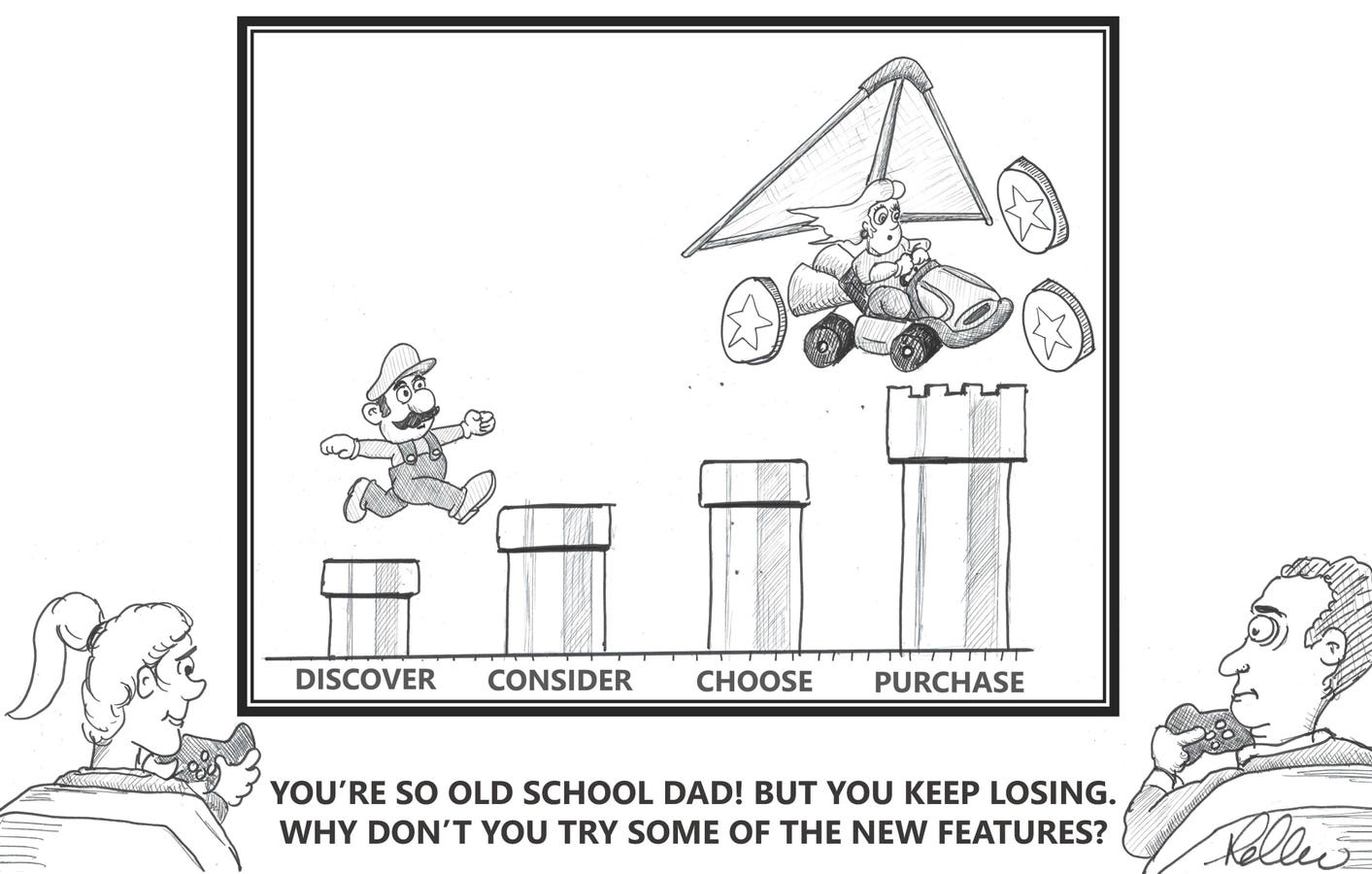Four Digital Media Platforms That Make It Faster and Easier To Drive Revenue Outcomes
A range of emerging digital media platforms and experiences- including retail media, social commerce, and livestreaming events- are making it easier for marketers to move customers deeper into the revenue cycle. These advanced media – fueled by AI innovation – move customers through the buying process faster, with fewer steps and greater visibility to generate more measurable revenue and loyalty outcomes. Commerce channels offer data-driven capabilities – such as data clean rooms, creative content matching, and AI-enabled ads – These platforms also offer data-driven capabilities – such as data clean rooms, creative content matching and AI enabled advertising – that augment and accelerate the ability of brands to quickly shift to digital commerce.
Retail media and social commerce are among the fastest growing parts of the media mix because they allow marketers to extend their impact deeper into the revenue cycle by enhancing product packaging, placement, positioning and promotion and driving more sales transactions. Retail media will grow to over 25% of total digital media spending ($100 Billion) in North America over the next three years as retailers like Amazon, Target, Kroger, and Walmart grow their investment in retail ad platforms. Social commerce drive $2 Trillion in sales globally in the next two years as platforms like Instagram, TikTok, YouTube Shopping, Twitch and X add native shopping functionality and livestreaming events.
The rapid adoption of these new commerce channels by customers – coupled with the ability of AI to accelerate innovation, simplify deployment, and personalize experiences – are changing the basis of competition. Particularly in markets targeting younger consumers and tech savvy business buyers. Any brand that relies on digital, eCommerce, retail, product-led, and subscription revenue models that fails to understand and experiment with them in 2024 risks losing a competitive edge. They include:
Retail media – advertising to consumers at or near their point of purchase across digital media networks that span one or many retailers – is expected to drive $1.3 Trillion in revenues for advertisers in 2024 according to research by Integrated Ad Sciences. Retail media investment is expected to grow to make up 25% of total digital media spending ($100 Billion) in the next three years as retailers like Amazon, Kroger, Target, and Walmart expand their retail ad platforms and capabilities. This shift is largely driven by consumer privacy regulation and cookie deprecation, which have underscored the importance of quality 1st party commerce data sources such as those owned by retailers.
Social commerce – the process of selling products or services directly through social media networks, gaming communities, or other contextual commerce experiences – will drive $2 Trillion in sales globally in the next two years. Social commerce is emerging as a primary way consumers discover, try and buy brands. Already 7% of ecommerce sales in China occur natively in a social channel. While US social commerce sales are a fraction of that total today ($80 B), it is expected to accelerate as the wave of social commerce moves from East to West. Platforms like Instagram, TikTok, YouTube, Twitch and X have made substantial investments into native shopping functionality over the last four years and are poised for substantial growth.
Livestream shopping experiences – the real-time broadcasting of TV, video game streams, social media content, and other rich content over the internet for an audience to watch as it happens – are expected to generate $50 billion in sales for advertisers in 2023 according to Coresight Research. Platforms like Twitch, Facebook Gaming, YouTube Gaming, TikTok, and eBay are actively building on the format’s success in China where livestreaming accounts for over $200 Billion in Retail Ecommerce Revenues according to eMarketer. Today 165 million consumers experienced livestreaming events worldwide according to Twitch. 83% of livestream shoppers believe shoppable livestream offers a more authentic and organic way to engage with brands and makes it easier for them to decide to purchase a product, regardless of the product or product category. 79% of adults who typically shop online had watched a shoppable livestream and 39% of whom have made purchases in the platform.
Influencer and creator channels. In parallel, a vast content community made up of creators, subject matter experts and influencers with massive followings of loyal viewers have emerged over the last decade on social media. These key opinion leaders and consumers can command greater awareness, preference and trust with larger audiences than traditional brands are able to generate on their own. They represent a new path for brands to scale the reach, engagement and impact of their paid, earned, shared and owned media investments. Brands can choose from a wide array of over 200 million influencers and creators with unique interests and audience are building the reach trustworthiness, and parasocial relationships that have become a critical factor in customer buying decisions. One-third of U.S. consumers say that social media influencers impact their buying decisions according to Deloitte Digital. Academic research has demonstrated that the making “75 billion views on TikTok made me buy it” is much more than a tag line. Today there are four million creators with an audience of over 100,000 viewers worldwide. The top creators have audiences far larger. For example, the average influencer in the Forbes Top 50 Creator list has an audience of over 50 million dedicated followers. That compares favorably with the traditional broadcast media vehicles marketers have historically used to gain reach and scale such as the Academy Awards (18.7 million viewers), Grammy Awards (12.5 million viewers), and the World Series (11.78 million viewers). But they are the tip of the iceberg. There are four million Macro influencers , creators and key opinion leaders with 100,00 – 1 million viewers, worldwide. And even more Micro (1-100,000 viewers), and Nano influencers (community leaders and key opinion consumers with fewer than 1,000 viewers) that can drive social commerce through organic, word-of-mouth recommendations to their personal networks. These smaller creators represent the lions share (88%) of brand partnerships according to the State of Influencer Marketing report. They provide a very large box of crayons to color in a contributor portfolio that fits your brand position, messaging, audience and safety goals.
The rapid rise of these new media platforms and experiences, coupled with AI infused innovation, are changing the basis of competition particularly markets targeting younger consumers and tech savvy business buyers.
Brands that allocate resources and effort to these commerce strategies and build the analytical capabilities to leverage the unique data sets they offer, have an opportunity to dramatically improve business outcomes. “Marketers that effectively integrate this arsenal of owned eCommerce, marketplace, social, phygital (physical plus digital), and retail media to create compelling customer experiences can generate much greater revenue impact from their media dollars,” reports Randolph Browning, who leads Night Market, a division of Horizon Media that specializes in omnichannel and digital selling. “Brands that make a sustained level of investment in retail media, social commerce, and livestreaming are experiencing 50% improvement in commerce program performance – in terms of total revenue and new customer acquisition – with commerce program optimization.”
There are several practical ways marketing leaders can take to capitalize on the potential of these emerging media platforms to better connect the dots across their go-to-market to generate more measurable and consistent revenue outcomes.
1. Build stronger internal capabilities and media, creator and agency partnerships. To effectively leverage these advanced media platforms, marketers need to invest in stronger internal capabilities in advanced analytics, the ability to create and manage compelling content, an infrastructure to fulfill digital commerce. In particular, they’ll need to build more muscle in marketing and sales data integration, omnichannel campaign orchestration, and dynamic resource allocation modeling.
2. Connect the dots across your marketing, media and commerce technology portfolios. These advanced retail media, social commerce, livestreaming platforms are blurring the lines between the customer inspiration, discovery, consideration and transaction stages of the digital customer journey. This forcing CMO’s to connect the dots with their owned marketing, service, and sales channels to improve conversion, attribution and the customer buying experience.
3. Borrow customer and audience insights to better target, plan, personalize and optimize your media. For example, Kroger Precision Marketing captures and shares 10 Petabytes of customer purchase and engagement data across its 60 Million Households who are in the customer loyalty platform with brands to blend with their own first party customer insights to sharpen their targeting, messaging and creative to generate more impact.
Take advantage of AI tools and first party partner data to make it faster and easier to plan, test, personalize, and optimize media campaigns. For example 57% of the marketers working with Google are using AI to reimagine the customer experience to generate better margins, loyalty and usage over time.
5. Develop more and better content. These channels run compelling branded, borrowed and personalized content that entertains but also supports your brand position, value story and messaging. For example, 71% of marketers with a social influencer program have had to increase their content budgets in the past year according to the State of Influencer Marketing report.
Read the full article here





